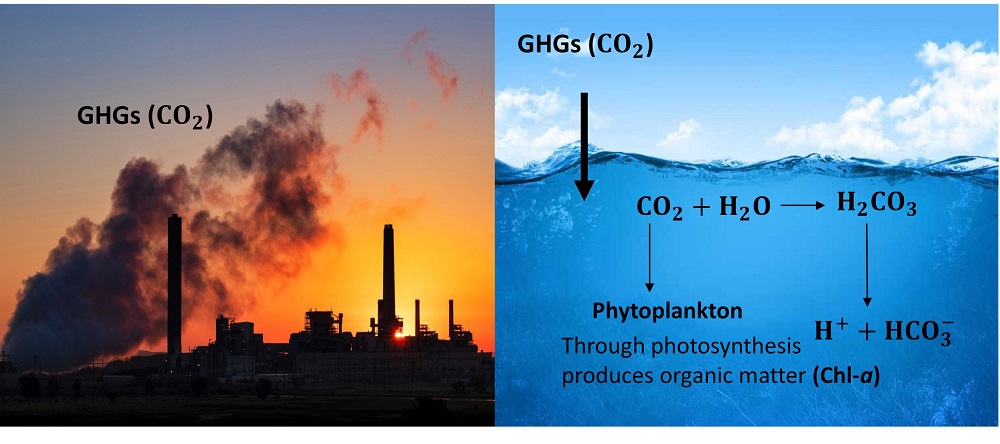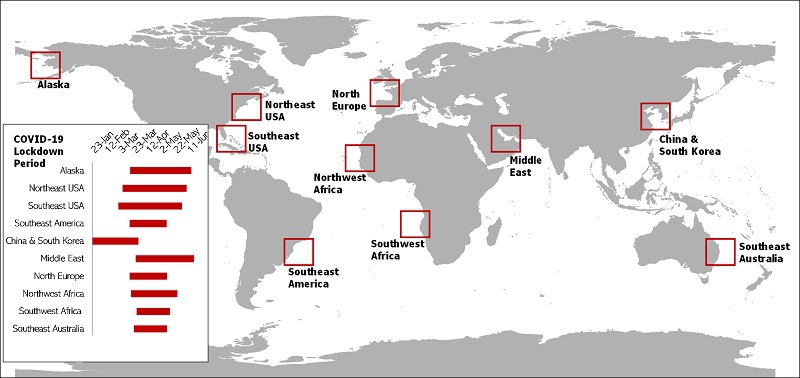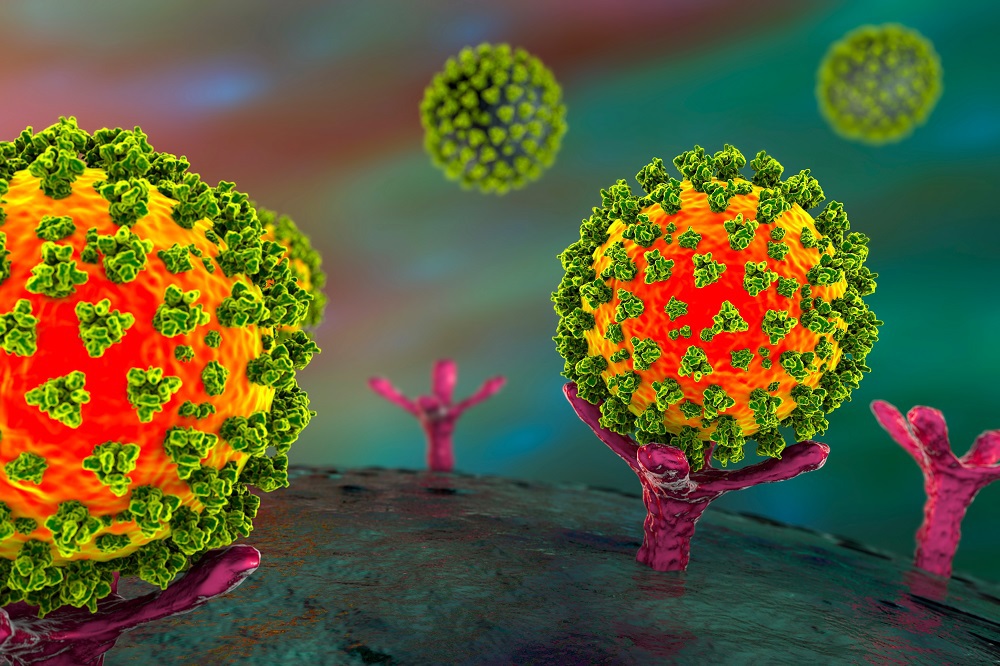
The Covid-19 pandemic has impacted everything from the largest societies on earth to the smallest microalgae in the sea.
The oceans directly influence life on Earth, regulating the global climate, stimulating rainfall, and providing 50 to 80 percent of the Earth’s oxygen. Any change on the surface of the ocean has a direct effect on life on this planet. They also constitute the Earth’s largest source of food, with more than 40 percent of the world’s population relying on the oceans as their primary food source. As the pandemic caused by the novel coronavirus has shown a pronounced effect on the environment in general, recognizing its effect on the oceans is paramount.
Dr. Maryam R. Al Shehhi, Assistant Professor in the Khalifa University Department of Civil Infrastructure and Environmental Engineering, investigated the effects of the Covid-19 pandemic on the oceans with Dr. Yarjan Abdul Samad from the University of Cambridge. They published their findings recently in the journal Remote Sensing Letters.
“The global Covid-19 lockdowns resulted in the closure of the largest industries in the world for a period of two months,” explained Dr. Al Shehhi. “This was enough to cause a seven percent drop in anthropogenic carbon dioxide in the atmosphere. While there have already been investigations into the effect of the pandemic on the atmosphere, the question remains: what happened to the oceans?”

One way of determining the state of the oceans is to consider their productivity. Ocean productivity represents the health of the marine ecosystem and the carbon cycle and largely refers to the production of organic matter by phytoplankton suspended in the ocean. Phytoplankton harvest light to convert inorganic carbon to organic carbon and then supply this organic carbon to organisms that obtain their energy from the respiration of organic matter, such as zooplankton, fish, and marine mammals.
“Productivity is commonly estimated as the plant biomass in the ocean, and chlorophyll-a is one of the key metric indicators,” explained Dr. Al Shehhi. “Associated with ocean productivity are the sea temperature and the carbon cycle.
“Big industries, such as the automobile factories, textile and clothing factories, and maritime fishing and shipping operations, were on hold for a period of two months, with many fishing vehicles unable to leave port and a substantially reduced demand for many seafood products,” explained Dr. Al Shehhi. “These human stressors have been seriously affecting the ocean for several decades, causing a high sea surface temperature, ocean acidification, and increasing ultraviolet radiation. If these industries continue to operate as they have, the sea surface temperature is projected to rise by 2.8°C by 2100, which would have devastating effects on the planet.”
However, during the pandemic lockdowns, there was a seven percent reduction in global carbon dioxide emissions from cumulative human activity. The researchers considered how this reduction could have affected the oceans by examining the levels of chlorophyll-a (chl-a) before and during the pandemic using satellite images. Their results show a reduction in chl-a concentrations in the global oceans, particularly in the coastal regions.
Satellite images can be used to measure the concentration of chl-a, the pigment used by phytoplankton to photosynthesize. The levels of chl-a in the surface water are an indication of how much primary production is occurring in the surface of the ocean. Since phytoplankton need nutrients for photosynthesis and growth, chlorophyll concentrations are highest where nutrient concentrations are highest. Currents in the ocean can bring nutrient rich water from the deep up to the surface, which means there is a correlation between water temperature and chlorophyll concentration. Cold water generally has higher chl-a concentrations than warm water because it contains nutrients that have recently been carried up from the deep ocean. The cold, nutrient-rich waters of the North Atlantic are more productive than the warmer, tropical waters found around the equator.
Dr. Al Shehhi and Dr. Samad investigated the chl-a concentrations in eleven regions, selected for the presence of either high industrial activity or large population: Alaska, Northeast United States, Southeast USA, Pacific Ocean, Southeast America, China and South Korea, Middle East, North Europe, Northwest Africa, Southwest Africa, and Southeast Australia.
“We saw a prominent decrease off Alaska, Northern Europe, South China and the Southeast USA,” said Dr. Al Shehhi. “CO2 emissions from South China dropped by 123 tonnes during the pandemic, and this resulted in a five percent drop in chl-a in the surrounding ocean. This drop in chl-a could be caused by the reduction of the CO2 emissions during the pandemic period because phytoplankton biomass takes up the atmospheric CO2 during photosynthesis.”
The reduction in atmospheric CO2 emissions has also affected the carbon cycle in the ocean. The ratio of inorganic carbon to organic carbon has decreased, indicating a reduction in CO2 uptake. In Europe, the reported reduction of atmospheric CO2 emissions by 24 percent may have caused a direct 75 percent decrease in the carbon ratio of the seas in northern Europe. The coastal areas off Alaska and in the North Indian Ocean and Eastern Pacific also saw a cooling response of 0.5°C following the reduction in CO2 emissions. As the water there had previously been warmed by global climate change, this cooling can be attributed to a reduction in emissions.
“A lower surface temperature can improve the uptake of atmospheric CO2 by the ocean and can enhance the productivity process,” explained Dr. Al Shehhi. “Therefore, the reduction in CO2 emissions doesn’t have a direct effect on chl-a and surface temperature, rather, it is related to both of them.”
The researchers explained that while carbon dioxide in the atmosphere is needed by phytoplankton to photosynthesize, during this process, the water in the oceans becomes warmer, more acidic, and less oxygenated.
“If anthropogenic pressures return to normal, CO2 emissions will return to normal,” said Dr. Al Shehhi. “This will continue to contribute to global warming and affect the oceans by causing acidification, stratification, increasing sea temperature and increasing productivity. Instead, maintaining global activities at the levels observed during the pandemic period could help to recover the oceans.”
Jade Sterling
Science Writer
18 May 2021






